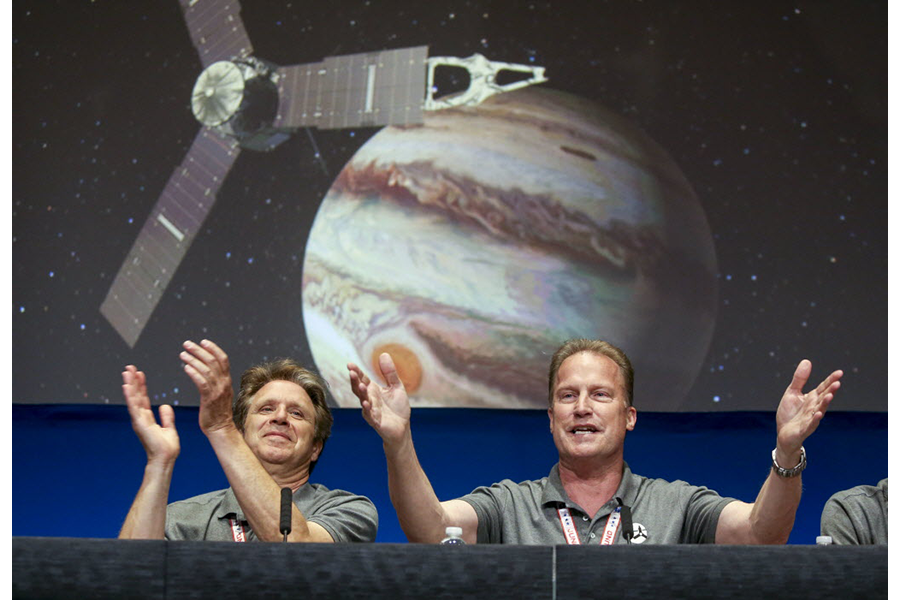540 million miles later, cheers as Juno slips into Jupiter's orbit
Loading...
Mission control erupted in cheers Monday night when, from 540 million miles across the solar system, NASA received the much-anticipated message: “Welcome to Jupiter!”
NASA’s solar-powered Juno spacecraft successfully entered orbit around the largest planet in the solar system, flawlessly executing a 35-minute engine burn to slow down enough to be captured into orbit.
The execution was challenging but flawless: Juno’s main engine fired to slow down the space probe by about 1,212 miles per hour from the fastest speed any human-made object has ever traveled just as it was flying through the harshest part of Jupiter's intense radiation belts.
At 11:18 pm eastern Juno transmitted a radio signal to earth indicating that its main engine had been switched on and the next 35 minutes confirmed that Juno was circling Jupiter in precisely the planned orbit before the on-time engine shutdown.
“NASA did it again,” Scott Bolton, the mission’s principal investigator, said, according to CNN. "We're there, we're in orbit. We conquered Jupiter."
Juno was launched nearly five years ago to study the composition and history of what scientists believe to be the first planet formed in our solar system. The probe will circle Jupiter 37 times, gathering data with its seven instruments onboard including a camera that the space agency says the public can help decide where to point.
The Juno team hopes the $1.1-billion mission will provide the first accurate survey of Jupiter’s magnetic field, which is nearly 20,000 times more powerful than Earth’s, generating polar auroras larger than our entire planet. And Juno offers hope for a peek beneath the planet’s gaseous veil, a glimpse at Jupiter’s core – to determine if it’s rocky or gaseous – and to achieve a better understanding of what is powering its giant red spot.
When Galileo, NASA’s previous mission to Jupiter, entered its orbit in 1995, its instruments were damaged by the radiation, so ultimately the space probe was only able to complete 70 percent of its data-gathering mission.
Juno, including its solar panels, has a span that's almost as long as a tennis court, and has performed excellently so far and scientists are hopeful it will shed light on the yet unanswered questions.
"After a 1.7-billion-mile journey, we hit our burn targets within one second on a target [in space] that was just tens of kilometers large," Rick Nybakken, the Juno project manager, said, according to CBS. "Isn't that incredible? That's how good our team is, and that's how well the Juno spacecraft performed tonight."
"It's amazing, it feels wonderful, and it's also just the beginning," said Juno project scientist Steve Levin of JPL to Space.com.








